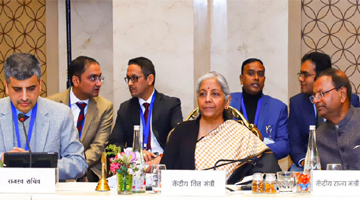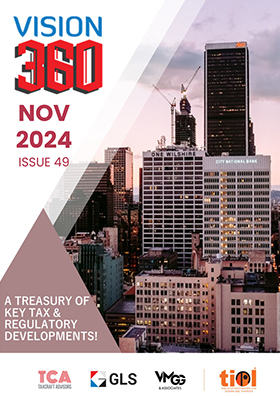AUGUST 21, 2024
By M G Kodandaram, IRS, Assistant Director (Retd), ADVOCATE and CONSULTANT
 Role of Audits in GST Regime Role of Audits in GST Regime
IN the evolving Goods and Services Tax (GST) framework, where self-assessment is central to tax compliance, the audit function plays a crucial role in maintaining system integrity. GST audits are designed to verify the accuracy of declared tax liabilities and ensure that registered entities adhere to legal requirements. Under this self-assessment model, taxpayers are responsible for calculating their tax liabilities, pay the taxes and inform the department through filing of the self-assessed returns on time. The audit process acts as a vital safeguard, checking that the reported tax liabilities are correct and that all required taxes have been paid. An effective audit can uncover discrepancies, deter tax evasion, and support government revenue collection efforts.
Despite these objectives, the implementation of GST audits by both central and state authorities often suffers from inefficiency, lack of transparency, and outdated practices. These issues persist, creating significant challenges for taxpayers and stakeholders, including the administration. Contrary to the principles of an effective audit process, many GST audits are characterized by disorganization, lack of focus, and unclear methodologies, which result in unnecessary difficulties for taxpayers. (refer - SOP for GST Audit - need of the hour; Non-uniform Implementation of Unified GST ; Inside GST Audits: Understanding the Hurdles for Registered Taxpayer ; GST Audit: Evolve a Combined and Transparent Procedure by the author).
Although separate establishments have been created by both central and state governments to promote transparency, the audit process frequently fails to meet these ideals due to inadequate attention and urgency given to addressing these issues. This article aims to detail some of the shortcomings of the current GST audit approach and explores the potential reforms to align with best practices envisioned by the law makers.
Effective Audit Process
For a GST audit process to be effective, it must be focused, transparent, and systematic. Achieving this requires a thorough understanding of the taxpayer's business, meticulous examination of records, and a fair evaluation of compliance levels. The audit should not only identify and address non-compliance but also encourage voluntary compliance by offering clear guidance and support to taxpayers.
A crucial component of an effective GST audit is the preliminary desk review. This review should be based on the extensive data already available within the department, such as filed returns, invoices, and all other pertinent documents. By analysing this data, auditors can pinpoint potential issues that require further investigation. However, it is observed that auditors often do not perform this preliminary review before visiting premises, instead request the taxpayers the basic data that is already available in the system. This practice imposes unnecessary burdens on taxpayers, who are forced to repeatedly provide the same information.
Desk reviews enable auditors to concentrate on high-risk areas, enhancing the efficiency and focus of the audit process. This targeted approach reduces unnecessary disruptions to businesses by concentrating on areas where discrepancies are more likely. A physical visit to the taxpayer's premises should only occur if significant issues are uncovered during the desk review. Moreover, a notice of at least 15 days should be provided in advance to ensure transparency and fairness. Unfortunately, it appears that such practices are not consistently followed in many States.
Adherence to Timelines
Adhering to timelines is crucial for an effective GST audit process. Auditors must follow strict deadlines for conducting audits and issuing final reports to prevent prolonged disruptions that can stress taxpayers, interfere with business operations, and create uncertainty. To mitigate these issues, audit teams should maintain timely and online communication with taxpayers, enabling them to address discrepancies and make necessary payments with interest without unnecessary delays. Currently, there is no evidence indicating consistent adherence to these practices, as such information are often not provided to taxpayers even after significant delays. The administration should implement an open and equitable system to ensure that prescribed timelines are respected and followed. This data must also be made available on the common platform for the stake holders.
The audit process must also be conducted with fairness and transparency to maintain taxpayer confidence. A transparent process nurtures trust between taxpayers and the administration, promoting voluntary compliance and minimizing disputes. It also enhances the detection of tax evasion, as taxpayers are more likely to cooperate when they perceive the process as just and objective.
Uniform approach as in the Audit Manual
The "Model All India GST Audit Manual 2023," developed by the Committee of Officers on GST Audits, represents a significant advancement towards achieving uniformity, efficiency, and comprehensiveness in GST audits across India. This manual aims to integrate best practices from both state and central tax administrations, as well as international standards, to establish a robust audit framework. The primary goal of this manual is to standardize the GST audit approach nationwide, ensuring that audit practices are uniformly adopted across all States and Central authorities. This standardization is intended to eliminate discrepancies in audit processes between different jurisdictions, providing taxpayers with a consistent audit experience regardless of their location.
The manual incorporates best practices and procedures that have been successfully employed by various indirect tax authorities in India, such as innovative methods from Karnataka, as well as internationally recognized standards. By adopting these practices, the manual aims to enhance the efficiency and effectiveness of GST audits, thereby improving revenue collection, strengthening internal controls within taxpayer organizations, and reducing the compliance burden on taxpayers. However, most of the recommendations outlined in the manual have not been implemented, leaving their potential largely untapped.
Central Repository of Audit Outcomes
One of the key recommendations in the manual is the creation of a central repository for audit outcomes to act as a centralized platform for disseminating significant audit findings, objections, and insights across all GST administrations in the country. The Director General-Audit at the central level is expected to produce a monthly or quarterly audit bulletin highlighting major audit objections. However, this bulletin is yet to be published.
The manual suggests that all states should establish comparable systems for tracking and sharing audit results. Additionally, developing a national-level knowledge-sharing platform would promote the exchange of audit findings and relevant information, leading to more consistent taxpayer experiences and enhanced audit quality and efficiency. Despite the clear advantages of such a platform, its implementation has faced huge delays. As of August 20, 2024, the website intended to host the central repository at https://dgaudit-cbic.org/gst-reports/ still shows a "Coming soon" message, with the page indicating that it has expired. There is urgent need to expedite the rollout of this initiative.
Failure to Fully Integrate Digital Tools
A significant shortcoming of the current audit process is its insufficient integration of digital tools and technologies. Although a comprehensive digital system was anticipated to be a key component of the GST Audit process, this goal remains unrealized even after seven years. As a result, reliance on outdated, manual processes persists, leading to time-consuming procedures that are prone to errors, inconsistencies, and malpractice.
According to the manual, the GST Network (GSTN) has developed the GST Audit Module -a complete digital back-office application designed to manage the GST audit process electronically. This module encompasses the entire audit workflow, including taxpayer selection, audit assignment, and the electronic issuance of final audit reports or show-cause notices (SCNs). However, the CBIC and most States (with a few notable exceptions) have not yet adopted this module. Usage of these digital tools must be made compulsory as it is essential for modernizing the audit process, enhancing efficiency, transparency, and reducing error rates.
Recently, the CBIC has begun utilizing Module 2 of the GSTN back-end for its processes and administration, representing a positive advancement. However, this highlights the urgent need for coordinated efforts to fully implement digital audit tools across all GST administrations. Complete integration of these tools would enhance audit efficiency and rebuild stakeholder confidence in the system.
Enhancing Consistency to Reducing Litigation
On August 14, 2024, the CBIC issued Instruction No. 03/2024-GST dated 14 August 2024, building on the principles outlined in Instruction No. 01/2023-24-GST dated March 30, 2024. This new instruction provides crucial guidelines for managing audit matters, focusing on ensuring consistency and reducing litigation in CGST audits.
Under this instruction, when the CGST Audit Commissioner encounters differing interpretations of the CGST Act, rules, or notifications, they must refer these issues to the relevant policy wing before finalising the audit and issuing show cause notices. By addressing interpretative issues prior to formal action, the instruction helps minimize litigation risks and prevent unnecessary disputes. It applies to both new and ongoing audits, promoting consistency throughout the audit process. This also evidences that the audit findings are more of interpretational aspects and at times beyond the clarified matters. However, this referral process to the policy wing is designed to yield more uniform audit results and reduce discrepancies. This proactive approach is expected to lower litigation rates, enhance transparency.
The Need for Improvement
The current GST audit process in India requires immediate reform to address its shortcomings. Audits should start with a thorough desk review of available data to identify high-risk areas, reducing business disruptions. These reviews should be validated by senior supervisory officers before conducting on-site audits.
Strict deadlines for audits and final report issuance should be enforced to minimize business disruptions and provide certainty. Relevant information should be communicated to taxpayers and made accessible on a common portal for transparency. Developing and implementing clear guidelines and standard operating procedures will ensure a structured approach to audits, reducing arbitrary decisions and enhancing transparency.
Prioritizing the use of digital tools will streamline the audit process, improving efficiency, consistency, and accuracy in compliance assessments. The establishment of a central repository for audit outcomes and publishing of audit bulletins are crucial for improving audit quality and efficiency. Immediate action is needed to implement these recommendations in an effective manner.
By implementing these proposed measures, the audit process can be made more effective, transparent and supportive for both businesses and tax authorities. As the entire process is burdened with inefficiency, it is crucial for the Authorities concerned to take prompt action to achieve the stated reforms in a time bound manner.
[The views expressed are strictly personal.]
| (DISCLAIMER : The views expressed are strictly of the author and Taxindiaonline.com doesn't necessarily subscribe to the same. Taxindiaonline.com Pvt. Ltd. is not responsible or liable for any loss or damage caused to anyone due to any interpretation, error, omission in the articles being hosted on the site) |
|









 Download PDF
Download PDF Role of Audits in GST Regime
Role of Audits in GST Regime




